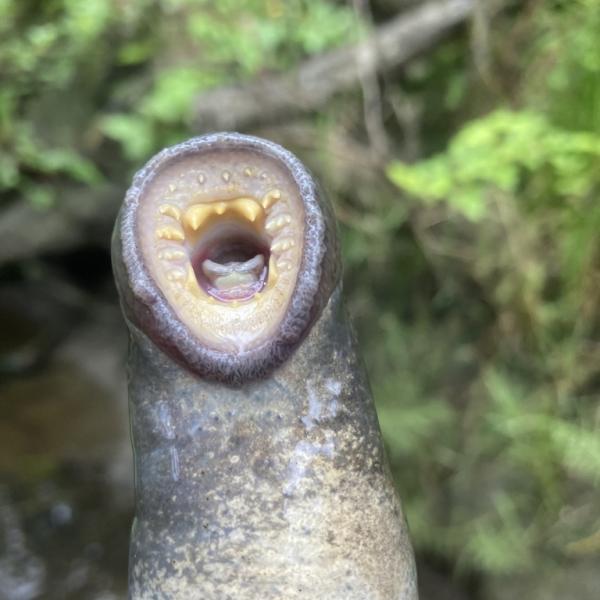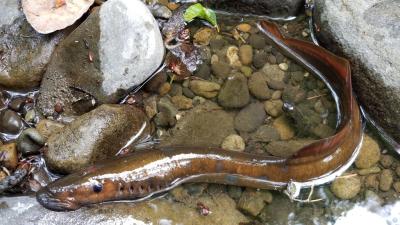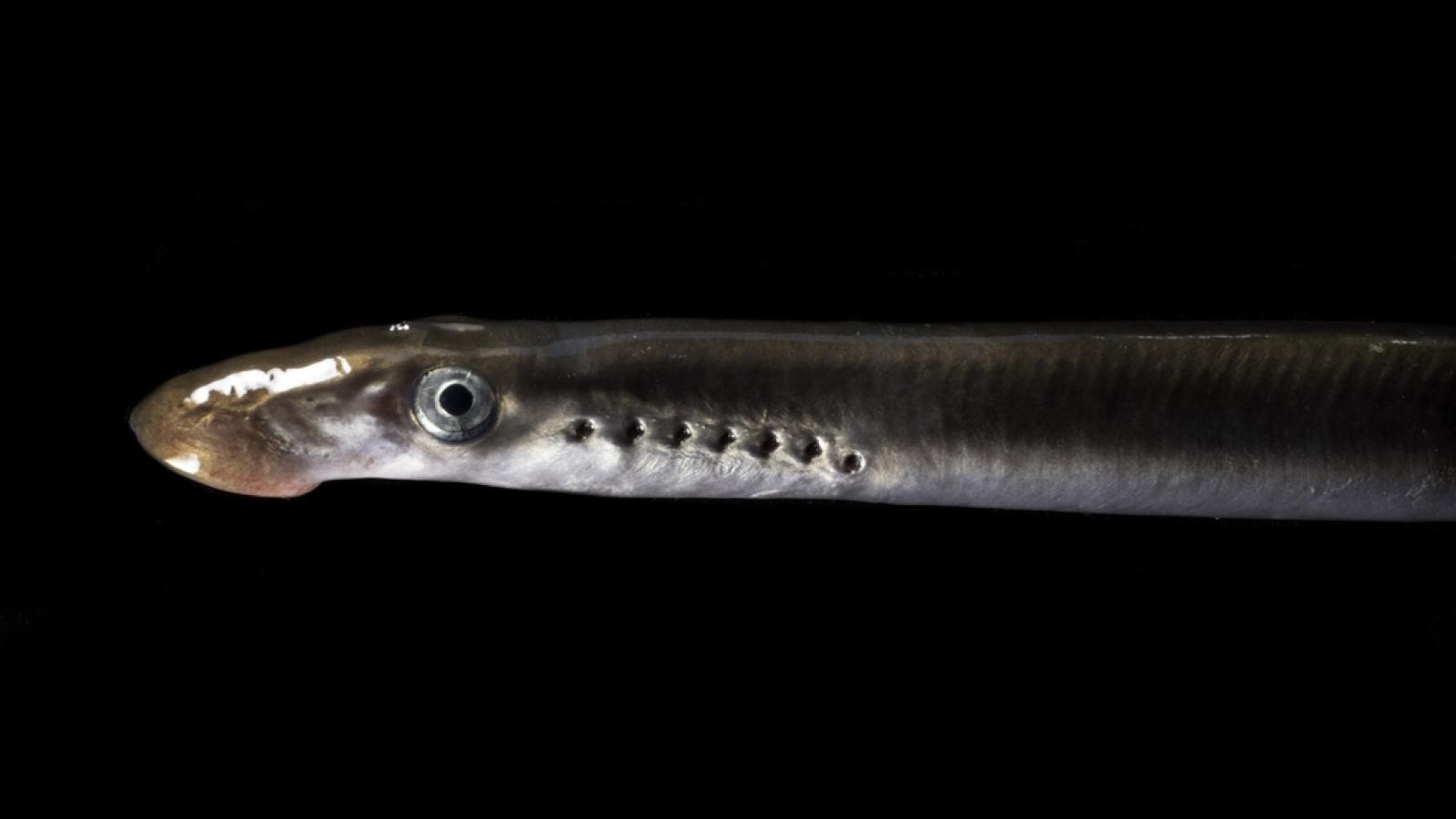While commonly mistaken for eels or feared due to their prehistoric looks and “vampiric” feeding styles, pacific lamprey (Entosphenus tridentatus) play an important role in the ecosystem.

Pacific Lamprey Fast Facts
- The Pacific lamprey is an ancient fish that has survived ice ages and mass extinctions. The ancient fish group called Agnatha predates dinosaurs and trees.
- They can grow up to 80 cm, or 31 inches, in length.
- Lamprey are not able to jump upstream on fish ladders and are more vulnerable to urbanization.
- They have elongated bodies and two dorsal fins.
- In freshwater, pacific lamprey are brown. In the ocean, they are grey-blue or green on the back and lighter colored on the underside.
- Pacific lamprey have been caught at depths ranging from 300 to 2,600 feet and 62 miles off the west coast in ocean haul nets.
Pacific lamprey are anadromous, parasitic fish that begin their lives in freshwater before traveling downstream to the ocean. Lamprey spend most of their lives as larvae, or ammocoetes, in freshwater streams. For three to seven years, they survive through filter feeding and burrowing into soft substrate.
After the larval period, the ammocoetes go through metamorphosis, which is vary rare for fish, before migrating to the ocean. Their secondary body has a jawless, suction-cup-like mouth that allows them to attach to other fish and sperm whales. They feed on blood and body fluids until full, then separate from the host. Despite their parasitic nature, pacific lamprey are not dangerous; they rarely kill their host fish and live offshore, deep in the ocean.

After 1 to 3 years in the ocean, adults return to streams to spawn. Pacific lamprey do not feed when they return to freshwater, losing about 20% of their bodyweight over winter before spawning in the spring and summer. The females lay their eggs in redds or gravel nests, built by carrying gravel in their mouths. The males externally fertilize the eggs and both males and females typically die within a few days after spawning. Their bodies provide valuable ocean-derived nutrients for other freshwater species.
Pacific lamprey is listed as a California State Species of Special Concern due to population declines resulting from low streamflow and instream barriers. They are an important part of the food web in the ocean as well as in freshwater due to their high fat and caloric content as prey — they can contain 3 to 5 times as many calories as salmon by weight. The pacific lamprey has at least 40 predators, including fish and birds and a variety of marine and terrestrial mammals including seals, otters, orcas, sturgeons and humans. The presence of pacific lamprey enriches ecosystems and preserving their ecological role is crucial.


